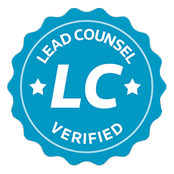As we age, getting around independently becomes more difficult. Declining vision, hearing, mobility and reflexes put elderly pedestrians at higher risk for accidents and injuries. However, there are many things communities and individuals can do to help seniors stay safe while walking.
Why Elderly Pedestrians are at Risk
There are several reasons why seniors are more vulnerable as pedestrians:
- Reduced vision – Many older adults suffer from conditions like cataracts, glaucoma and macular degeneration that can make it harder to see vehicles and hazards clearly. Depth perception and peripheral vision also diminish with age.
- Diminished hearing – Hearing loss is common in the elderly. This makes it more difficult for them to hear approaching vehicles or bicyclists.
- Slower reflexes – The ability to quickly react to dangerous situations decreases as we get older. This makes it harder for seniors to get out of the way of oncoming traffic.
- Mobility challenges – Conditions like arthritis, muscle loss, joint pain, and poor balance increase the chances of falls and reduce mobility. This makes crossing streets before lights change more difficult.
- Cognitive decline – Dementia, Alzheimer’s disease, and normal aging can result in difficulty judging distances, confusion, slowed decision making, and forgetfulness. This impairs awareness and good judgment while walking.
- Medication side effects – Common medications like sleep aids, anxiety drugs, antidepressants, blood pressure medications and antipsychotics often have side effects like dizziness, fatigue and blurred vision which can impact pedestrian safety.
All these age-related changes make seniors more likely to be involved in pedestrian accidents.
Danger Spots for Elderly Pedestrians
Some common situations and locations present increased risks for older pedestrians:
- Crossing busy intersections – Judging gaps in traffic, seeing all directions clearly, and crossing quickly enough are challenging for many older pedestrians.
- Navigating parking lots – Lots have many hazards like moving cars backing up or pulling through spaces, poor lighting, uneven surfaces, and distracted drivers.
- Walking along high traffic roads – Roads without sidewalks or with poor visibility put pedestrians in danger from passing vehicles. Seniors may have trouble moving off the road quickly.
- Interacting with drivers at intersections – Drivers may not notice elderly pedestrians trying to cross, especially at non-light controlled intersections. Right turning vehicles are a common threat.
- Crossing medians and islands – Curbs and elevated medians are tripping hazards. Seniors may struggle to step up or down in time.
- Construction zones – These areas have temporary signage, lane shifts, uneven surfaces, detours, and heavy equipment that make navigation risky.
- Inclement weather – Rain, snow, ice and wind impact visibility and traction greatly increasing fall risks.
Safety Tips for Elderly Pedestrians
While awareness of risks is important, there are many things both older adults and communities can do to improve senior pedestrian safety:
For elderly pedestrians
- Exercise regularly to improve strength, balance and reflexes. Physical activity has cognitive benefits too.
- Have your vision checked annually and update eyeglass prescriptions regularly. Consider yellow tinted lenses to improve contrast.
- Use a walking aid like a cane or walker for stability if needed.
- Wear bright clothing or reflective items to be more visible. Carry a flashlight at night.
- Avoid distracted walking – don’t use your phone or listen to music while walking.
- Cross streets at crosswalks and intersections with lights when possible.
- Look left, right, and left again before crossing; keep looking while crossing.
- Watch for turning vehicles and make eye contact with drivers. Don’t assume they see you.
- Allow extra time to cross streets. Don’t rush when crossing.
- Avoid roads with fast moving traffic; choose routes with less traffic when possible.
- Stay alert! Don’t walk when too tired, dizzy or distracted.
For communities and government
- Add more crossing islands, speed bumps, raised crosswalks and other traffic calming measures.
- Increase walk signal crossing times at intersections.
- Improve lighting and install brighter street lighting around sidewalks and crossings.
- Add audible walk signals, countdown timers, and other accessibility features.
- Remove obstructions like utility poles and overgrown plants from sidewalks.
- Repair cracked and uneven sidewalks that pose tripping hazards.
- Add traffic signage reminding drivers to yield or watch for pedestrians.
- Mount signs and signals lower for easier visibility.
- Conduct traffic safety campaigns about driving safely around pedestrians.
- Consider lower speed limits in areas with high pedestrian traffic.
- Add more benches and shaded areas so seniors have places to rest.
With some preparation and precautions, older adults can continue walking safely in their communities. It also requires drivers and communities to implement safety measures with senior pedestrians in mind. By working together, pedestrian accidents and injuries can be reduced.
If an elderly loved one has been injured as a pedestrian, contact our law firm for a free consultation. Our attorneys have decades of experience handling pedestrian accident cases and getting injured victims the compensation they deserve.
Visit one of our offices at:
- Beverly Hills – 8383 Wilshire Blvd, Suite 830, Beverly Hills, CA 90211
- Los Angeles – 212 East Pico Blvd, Suite #4, Los Angeles, CA 90015
- Tulare – 100 E. Cross, Suite #122, Tulare, CA 93274
- Hanford – 13400 Hanford Armona Rd, Suite #B
Or call now for a free consultation on (877) 729-2652 or (323) 782-9927.













